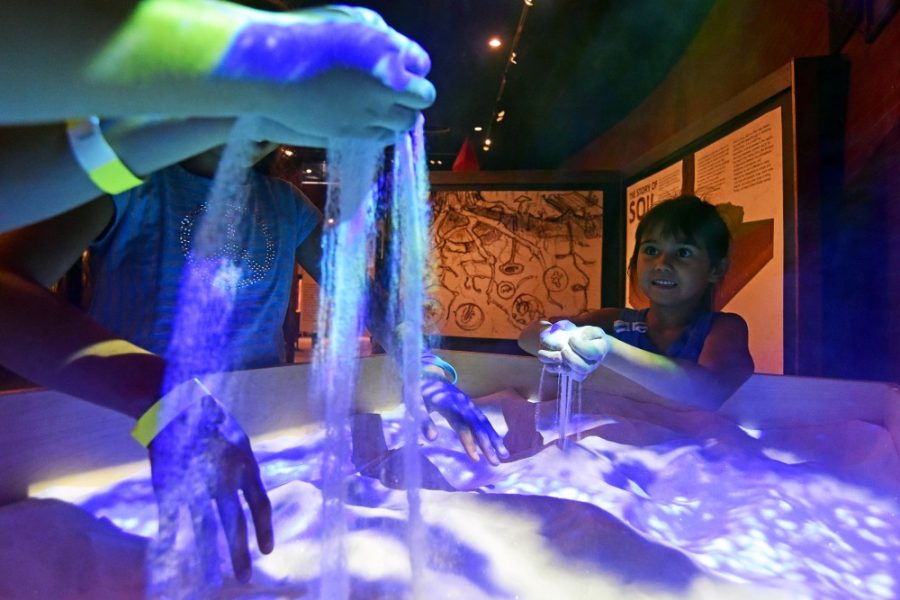The UA Flandrau Science Center and Planetarium hosted its grand reopening of the Eos Foundation Theater on Saturday, Aug. 27. The theater underwent numerous renovations over the last four months.
The renovations were made possible due to donations from the Eos Foundation, a private foundation that invests in opportunities and projects that will provide children with higher levels of education.
The planetarium celebrated the new theater’s opening day by offering free admission for the surrounding exhibits, and a discounted $3 admission to the planetarium shows.
Jhoedi Sellers, an astronomy sophomore and a student-staff member training to become a planetarium operator, detailed the newly renovated planetarium.
Before the renovations even began, Flandrau retired their beloved star projector after 40 years.
“There was a giant mechanical robot type of thing that had about 109 or 110 ‘eyes,’ kind of like lenses, and his name was ‘Hector Vector Our Star Projector,’” Sellers said. “He was sitting right in the middle of the planetarium this time last year, and we had to retire him.”
READ: So long to Flandrau’s Hector Vector
Sellers said there are now two projectors named after actual stars, Sirius and Procyon, that project onto each half of the planetarium’s theater dome.
These two projectors were installed about two years ago to replace Hector Vector, and still currently allow audience members to be completely surrounded by space’s infinite beauty and mysteriousness.
“That’s what gives us our nice, full dome experience, and it’s beautiful in there,” Sellers said.
Sellers said that the theater also received new carpeting, seating, a new console and more space for seats for the disabled.
While the theater holds roughly 150 people at a time, there were around 250 people in attendance at the grand reopening.
Annabelle Loveridge, a sophomore studying neuroscience and cognitive science and a student-staff member said, “Asteroid: Mission Extreme,” the first show played in the new theater, was sold out this morning.
The planetarium offers multiple different learning environments for visitors, including the “Puzzles, Proofs and Patterns” exhibit and the UA Mineral Museum.
The UA Mineral Museum showcases a wide variety of colorful minerals and jewels, and it’s comprised of samples from many collectors, scientists and curators.
Walking around the “Puzzles, Proofs and Patterns” exhibit, adults and children alike can learn about different ecosystems through interactive projection games and play with puzzles that build mathematical skills.
Carrie Kempf, a technician at UA’s Medical Research building, brought her young son to the planetarium and experienced all that the exhibit had to offer while waiting for the next showtime to begin.
“[Flandrau] has very hands-on learning, and a lot of things [children] don’t normally see,” Kempf said.
Noël Hensley, the education coordinator for the Science Center and Planetarium, is in charge of managing field trips for students as well as youth programs such as the UA Fusion Camps, which are offered over the summer for students in kindergarten through the sixth grade.
READ: Cure boredom with rocks, stars and more at Flandrau this fall
“It totally excites kids,” Hensley said. “They can look at the night sky anytime, but they can actually have an operator, someone to guide them through the stars and planets. The kids are convinced the seats move because it actually feels like it. We can actually fly beyond our solar system looking at other universes, it just kind of blows their minds.”
Follow Jessica Suriano on Twittter.









